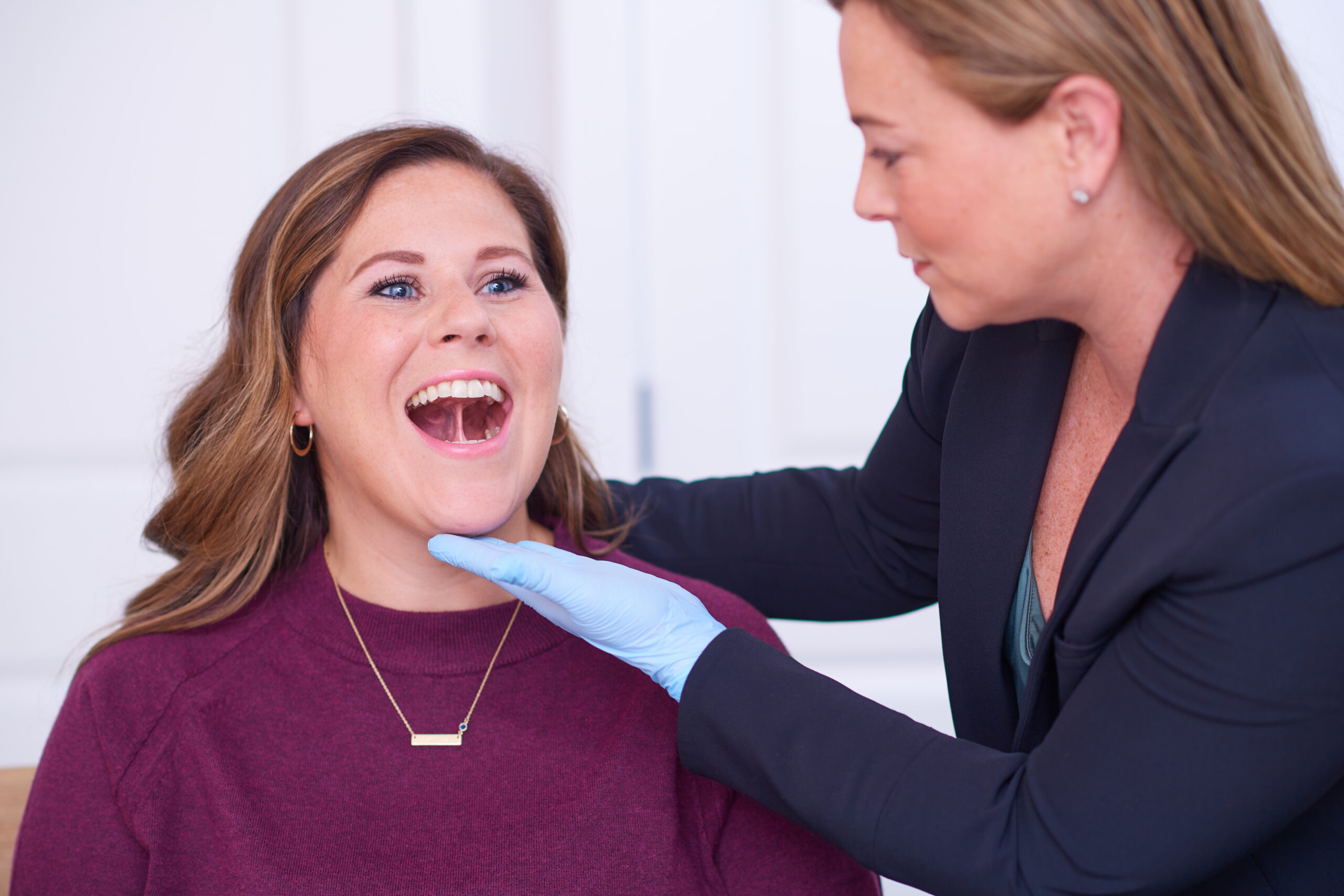Demystifying Orofacial Myology
What is orofacial myology?
Orofacial myology looks closely at how we use the muscles and structures of our face and mouth to help us speak, breathe, and eat. Specialists Mary Billings and Dianah Davidson are instructors of the Orofacial Myology: Making the Connection course offered by the International Association of Orofacial Myology (IAOM). In their course, they describe orofacial myology as the study of how the structures and associated movements of the face, mouth, and pharyngeal muscles impact the functions of breathing, swallowing, eating, speech, overall craniofacial development, and oral rest posture.
What is an orofacial myofunctional disorder, and how does it happen?
First, let’s think of this in terms of big muscles or bigger movements. When we hurt one of our ankles, or it isn’t functioning as it should, we begin to limp and place excess weight on our other leg. Just because we can still walk doesn’t mean we are doing it correctly. We could be creating more damage. This forces us to compensate with other muscles and it results in possible hip or back pain. We use or overuse other muscles to help our leg perform its job, and we have created weakness in our leg.
Next, let's shrink our view and focus on the small muscles of the face and mouth (orofacial muscles). When we have oral structural changes, for reasons we will discuss later, this results in compensations and prevents structures from doing their intended job. This creates compensations, or—as with the big muscles—limping and overuse. We recruit other muscles or patterns to help us with speech, feeding, and breathing. Just because we are able to complete the work (speaking or eating) does not mean we are using the muscles as intended. The atypical use of the orofacial musculature is referred to as an orofacial myofunctional disorder (OMD). Underlying orofacial myofunctional disorders can contribute to malocclusion and disorders of breathing, feeding, speech, or oral rest posture.
Some potential causes of OMD include the following:
- Oral habits: extended thumb or digit sucking, nail biting, cheek or tongue sucking
- Prolonged bottle or pacifier use
- Sippy cups
- Tethered oral tissues of the tongue and lips, commonly known as tongue and lip ties
- Mouth breathing
- Neurological impairments
- Trauma
- Oral hygiene problems
What should I look for, and who can help?
Orofacial myofunctional disorders can occur across the lifespan. Here are a few signs that can indicate a potential orofacial myofunctional disorder. Always seek an evaluation from an IAOM-certified provider in order to obtain a proper diagnosis.
Birth to 3 years
- Poor latch during breast or bottle feeding
- Uncomfortable or painful nursing
- Reflux
- Torticollis
- Tongue visible at rest
- Blister on the upper lip
- Open mouth at rest
- Behavioral feeding concerns: limited diet, gagging, vomiting
- Difficulty moving to solid foods
- Delayed language or speech is difficult to understand
Children and adults
- Mouth breathing or audible breathing
- Grinding or clenching
- Poor sleep
- Sinus congestion
- Enlarged tonsils and adenoids
- Picky eating or preferring soft foods
- Drooling or poor oral control
- Tethered oral tissues (tongue, lips, cheek ties)
- Tongue thrust
- Messy eater
- Reflux
- Malocclusion
- Atypical speech sound productions or distorted sounds
- Temporomandibular joint (TMJ) dysfunction
- Sleep apnea
- Chronic neck and/or back pain
An ASHA certified speech-language pathologist (SLP) is qualified to treat speech, language, and feeding. With specialized training through the International Association of Orofacial Myology (IAOM), an SLP can help identify and treat orofacial myofunctional disorders and secondary disorders such as speech or feeding disorders with integrative techniques that target the causes of the atypical function. The IAOM is a nonprofit 501(c)3 organization that offers the highest level of training and education and certifies medical and dental providers in orofacial myology. The SLP will work collaboratively with other professionals, as needed, to provide comprehensive care and to maximize treatment outcomes. We will explore the role of additional team members within a later blog—stay tuned!

